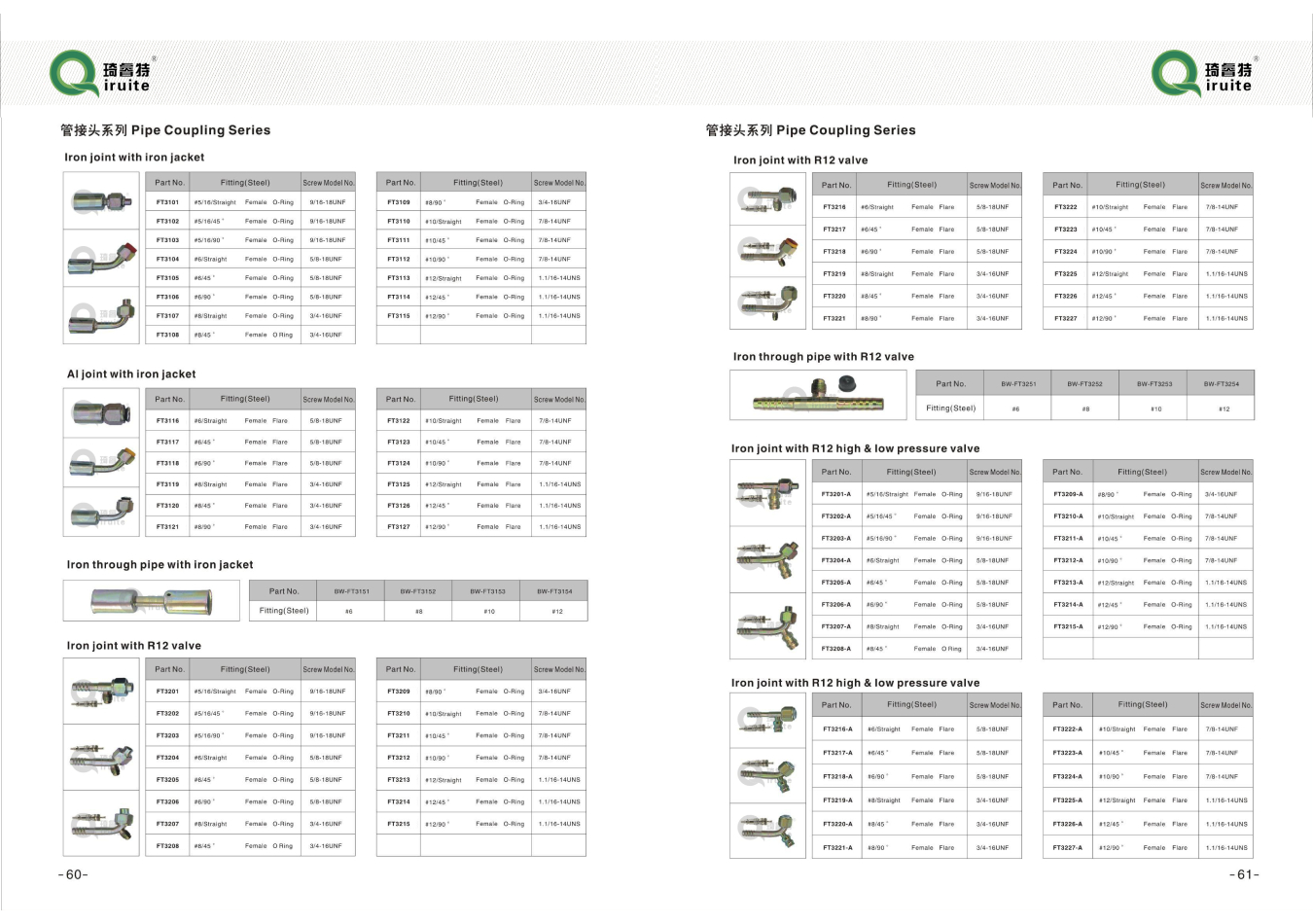Using R134a Refrigerant with Hoses for Effective Cooling Solutions in HVAC Systems
Understanding R134a Refrigerant and Its Applications with Hoses
In the realm of refrigeration and air conditioning, R134a (tetrafluoroethane) has emerged as a widely used refrigerant, especially after the phasing out of R12 due to its ozone-depleting properties. R134a is known for its efficiency in cooling systems, making it a popular choice in automotive air conditioning systems and various commercial refrigeration applications. This article aims to delve into the properties of R134a, its applications, and the importance of using the correct hoses in systems utilizing this refrigerant.
Properties of R134a
R134a is a colorless, odorless gas at room temperature and pressure. It has a relatively low boiling point of -26.3°C (-15.3°F), allowing it to efficiently absorb heat within the refrigeration cycle. One of its significant advantages is that R134a has a low global warming potential (GWP) compared to its predecessors like R12. The GWP of R134a is approximately 1300, so while it is not perfectly eco-friendly, it presents a more sustainable option than many older refrigerants.
Because R134a is a hydrofluorocarbon (HFC), it does not deplete the ozone layer. However, it is worth noting that due to environmental regulations and concerns about its GWP, there has been an increasing trend toward the use of more eco-friendly refrigerants, such as R1234yf. Nevertheless, R134a remains in circulation, and understanding its proper use is crucial for those in refrigeration and automotive services.
Applications of R134a
R134a is primarily employed in various cooling systems, including
1. Automotive Air Conditioning Most modern vehicles utilize R134a in their air conditioning systems due to its effective cooling properties and compatibility with automotive lubricants. Technicians must be skilled in handling R134a to ensure proper evacuation, charging, and leak repair in these systems.
2. Commercial Refrigeration Supermarkets, restaurants, and convenience stores commonly use R134a in commercial refrigeration units, display cases, and walk-in coolers. Its efficiency helps maintain the necessary temperatures for keeping food and beverages safe and fresh.
r134a refrigerant with hose

3. Residential Air Conditioning Many household air conditioning systems depend on R134a to provide effective cooling during hot months. Service technicians are trained to handle this refrigerant in maintenance and repair operations.
The Importance of Using the Correct Hoses
When working with R134a refrigerant, selecting the appropriate hoses for the system is vital for ensuring safety, efficiency, and reliability. Hoses used in R134a applications must meet certain standards to withstand the high pressures involved in refrigeration cycles.
1. Material Considerations R134a hoses are typically made from materials like rubber or thermoplastic elastomer that can handle the refrigerant's properties. They should be resistant to permeation, which is the gradual entry of refrigerant molecules through the hose walls, ensuring minimal loss over time.
2. Pressure Ratings Hoses must be rated for the high pressures that occur in refrigeration systems. R134a can reach pressures of around 100 to 150 psi during operation, and hoses must be capable of withstanding these conditions without bursting or leaking.
3. Temperature Resistance The operating temperature range for R134a hoses should also be considered. These hoses must perform well in both high and low temperature environments, ensuring safe and continuous operation throughout the year.
Conclusion
R134a refrigerant has become a staple in the refrigeration and air conditioning industries, known for its efficiency, safety, and relative eco-friendliness. The continued use of this refrigerant requires a comprehensive understanding of its properties and careful consideration of the components used in the refrigeration cycle, particularly hoses. Properly selected and maintained hoses ensure effective performance and longevity in systems using R134a, ultimately contributing to the sustainability of refrigeration practices and technologies. As the industry evolves and moves toward newer refrigerants, knowledge of R134a will continue to be relevant for many years to come, particularly for professionals working in HVAC and automotive fields.
-
Ultimate Spiral Protection for Hoses & CablesNewsJun.26,2025
-
The Ultimate Quick-Connect Solutions for Every NeedNewsJun.26,2025
-
SAE J1401 Brake Hose: Reliable Choice for Safe BrakingNewsJun.26,2025
-
Reliable J2064 A/C Hoses for Real-World Cooling NeedsNewsJun.26,2025
-
Heavy-Duty Sewer Jetting Hoses Built to LastNewsJun.26,2025
-
Fix Power Steering Tube Leaks Fast – Durable & Affordable SolutionNewsJun.26,2025

